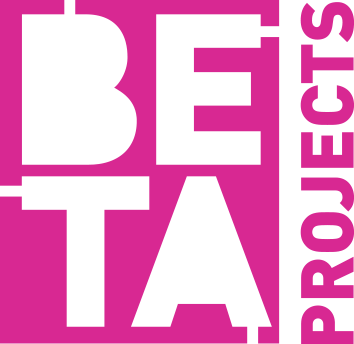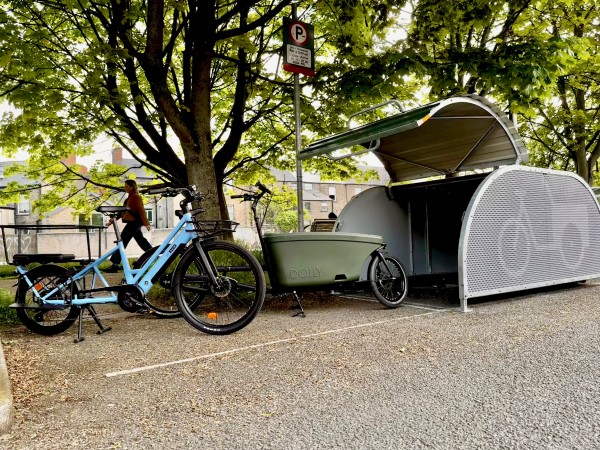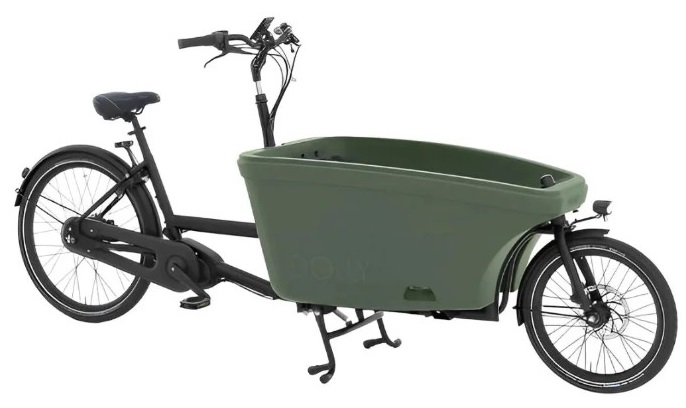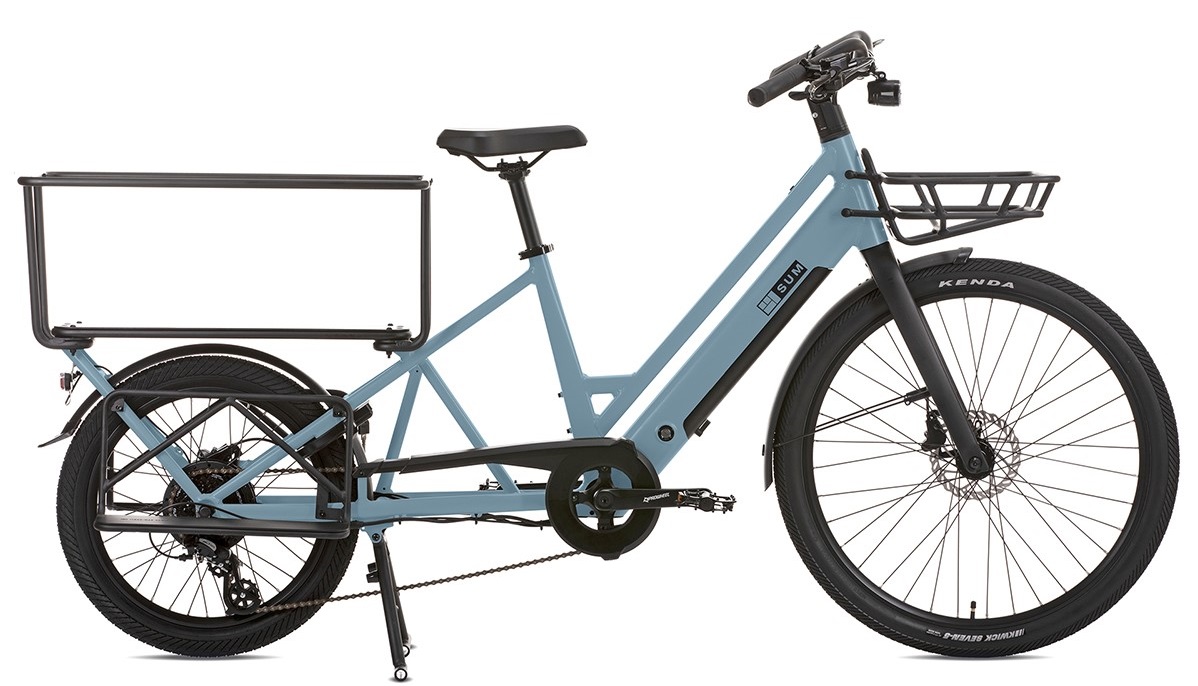Status: EXPLORING
CHALLENGE:
Cargobikes are cycles with purpose-built cargo carrying capacity. Electric-cargobikes (often called e-cargobikes) are becoming increasingly popular, offering a greener, more sustainable mode of transporting goods than cars or vans.
Some of the obstacles to e-cargobike adoption and usage include:
- Storage: Cargobikes are larger than bicycles and many people living in cities in towns do not have access to a suitable and secure storage space.
- Cost: Even though cycling is among the most budget-friendly means of transportation, the initial expense of buying an e-cargobike can be unaffordable for many people.
- Knowledge: While increasingly popular, e-cargobikes are still relatively uncommon on Irish roads and many people do not know how to learn more about e-cargobikes or to test one. This is amplified by the many varieties available and a high cost to buying the 'wrong type'.
- Safety Concerns: Some people are concerned about the safety of cycling an e-cargobike due poor cycling infrastructure.
You can read more about these obstacles here.
PROPOSAL AND OBJECTIVES:
Dublin City Council would like to explore a public, on-street, e-Cargobike sharing service. This could be a good way for people to be able to use a cargobike whenever they needed one, without the cost or storage requirements of ownership. For many it would also help them to learn more about the benefits of e-cargobikes and various models to improve a later purchasing decision.
Potential uses for an occasional e-cargobike trip:
- The “big” weekly shop
- Transporting bulky sports equipment
- Travel to the garden centre, allotment or pet shop
- Moving small items of furniture
- Filling it with everything you’d need for a trip to a park or a picnic at the beach
- Trips to the bottle bank or a recycling facility
We have temporarily installed one cargobike hangar onto a street in Portobello in Dublin 8, within which two different e-cargobikes will be stored. Users can signup and register for the service, which will enable them to open the hangar and unlock the e-cargoibikes by an app on their phone.
The use of the hangar is to reduce the risk of theft or damage to the cycles (in addition to the secure hangar, within which there are ground anchors, the e-cargobikes have specialist locks and are alarmed) and also to prevent them becoming filled with leaves or litter.
The two different e-cargoikes will be the below models:
Both of these e-cargobikes are suitable for transporting either cargo or additional passengers (with some weight/size restrictions naturally!).
The trial has been installed in Portobello, Dublin 8 at this location.
This location was chosen as:
- a quiet roadway (useful for those unfamilar with cargobikes at the start of their trip),
- convenient to residential areas,
- close to several routes to elsewhere in the city,
- well-lit and passively over-looked, and
- proximity to the Dublin Bikes station might also reinforce the concept of bikesharing and also increase the reach of the solution.
.jpg)
(BikeSharing, CargobikeSharing and CarSharing all next to one another.)
TAKING PART:
Bleeper will be providing the e-cargobike service - to sign up for this trial service, please visit Bleeper's information page to find out more information and to create an account (if you're not already a customer of theirs).
They will guide you through how to download and use the relevant apps, the tariffs, and the terms and conditions of using the e-cargobikes themselves. Note that unlike other Bleeper bicycles, all trips with the e-cargobikes are two-way - you will need to return the cargobike to the same location.
(Please note as a concept stage trial, this trial wil be fully removed after 12 months at the end of the learning period.)
OUTCOMES:
We hope to gather valuable insights during this trial, including your feedback on the experience and logs of the types of journeys taken over the period the trial is in place. Your feedback will help us understand the feasibility and functionality of this approach to urban mobility.
We would like to learn more about:
- Demographics - understand demographic uptake and behavioural change:
- Why/why wouldn’t people use the service?
- What can we do to encourage more people to test the service - in particular those who are most hesitant?
- Locating - identify optimum locations with due consideration for usage and equity:
- What areas in the city are most suitable for such a scheme?
- What areas are poorly served?
- Parking - identify supporting infrastructure requirements:
- What infrastructure is necessary such as on-street space, locking facilities, lighting, charging etc.?
- Are there issues with other cycles being parked in the designated area?
- Cargobikes - identify preferred cargobike models:
- For what purpose they are used, and patterns around how they are used
- Usability for the user
- Antisocial - identify the rates of negative behaviours:
- What are the levels of theft and vandalism?
- Are they returned late, dirty or damaged by users?
- Usage - Identify usage trends:
- The frequency of use (both in general, but also on average by each user),
- Trip lengths (both in time and distance),
- Typical destinations, etc.
DECISION:
[We are not yet at this stage.]
NEXT STEPS:
[We are not yet at this stage.]
RELATED PROJECTS:
WHAT DO YOU THINK?
Get involved in the conversation below.








